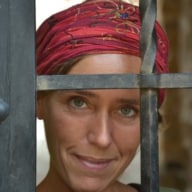LABIOMISTA Is an Evolving Work of Art About the Mixture of Life
Koen Vanmechelen created an evolving work of art on the foundations of the former mine and zoo of Zwartberg in the Belgian city of Genk: LABIOMISTA. In the 24-hectares park, he interweaves art, nature, and science into one large unfolding work of art that holds up a mirror to mankind. Anyone visiting LABIOMISTA will join Vanmechelen in his search for answers to the great questions of our civilisation.
“This is why I’m taking you here,” he says softly but also proudly when I turn around and try to express my admiration for what I see with a sincere “So beautiful from up here…!” As an inverse domino effect, the different constituent parts of LABIOMISTA have unfolded before my eyes into a kind of ‘golden section.’ In front of me is an overall concept that radiates peace, harmony, and balance, and at the same time strength, energy, vitality… promise.
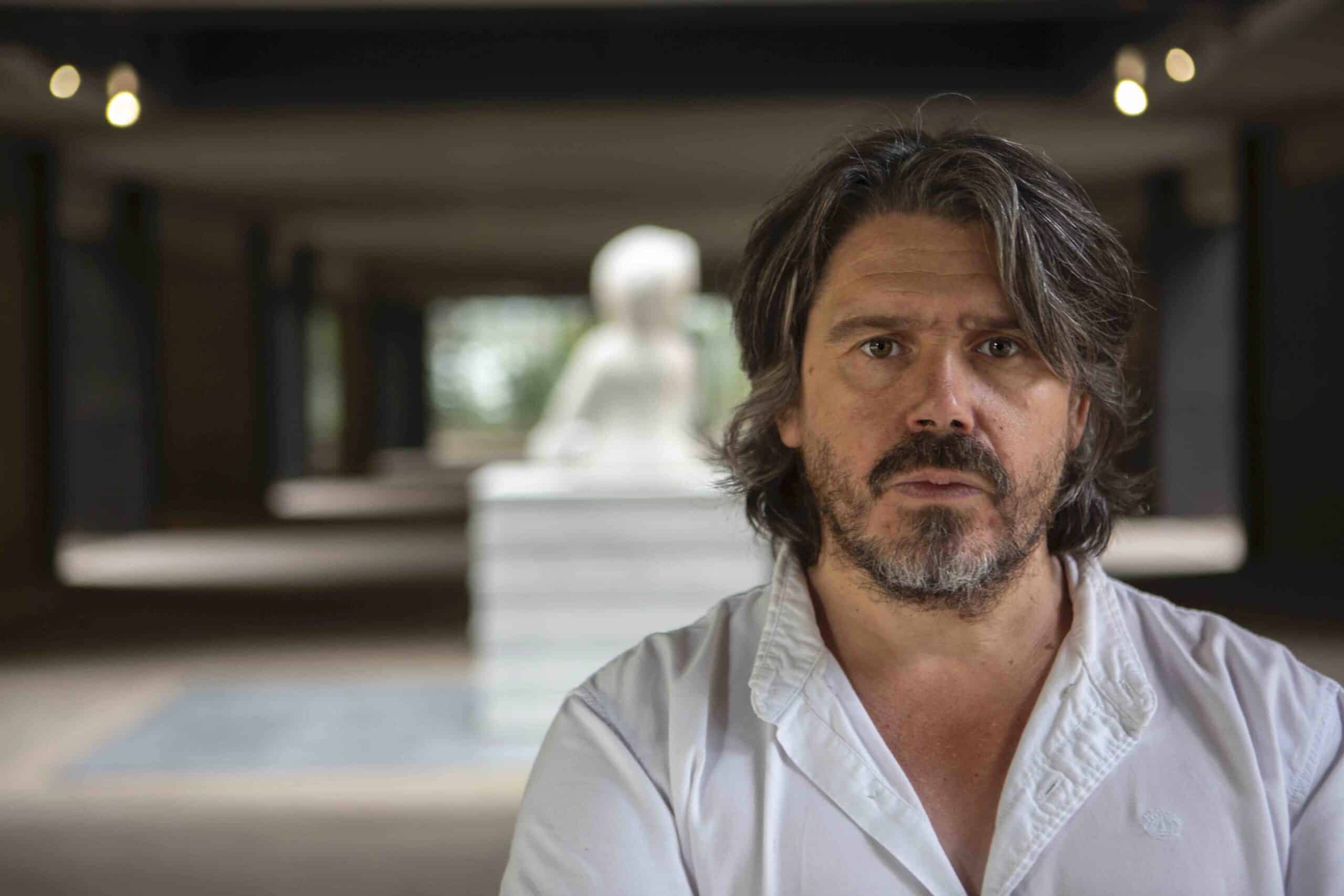 Koen Vanmechelen
Koen Vanmechelen© Studio Leyssen
I stand with Koen Vanmechelen on the traffic roundabout, which forms the intersection between the city (now behind and next to us) and LABIOMISTA, between civilisation and jungle, between domesticated and untouched. As it turns out, this dividing line has more meaning on the site and in the mind of the artist. Slanting right leads to The Ark, Villa OpUnDi, and The Battery. It is an interplay of modern top architecture and carefully restored heritage. Behind it lies a vast park – partly inhabited by animal families from Koen Vanmechelen’s universe, the Cosmopolitan Culture Park, and partly “wild,” the Protected Paradise, which merges directly into the Limburg National Park.
For the construction of the entrance gate/reception hall, The Ark, and for the studio, The Battery, a collaboration was established with the Swiss architect Mario Botta. The black brick is a reminder of the site’s coal past. The Ark resembles the bow of a ship, it pulls the engine. The Battery is the beating heart of the site. It’s the artist’s studio. Between the two architectural gems, lies the Villa, which has been restored to its original splendour.
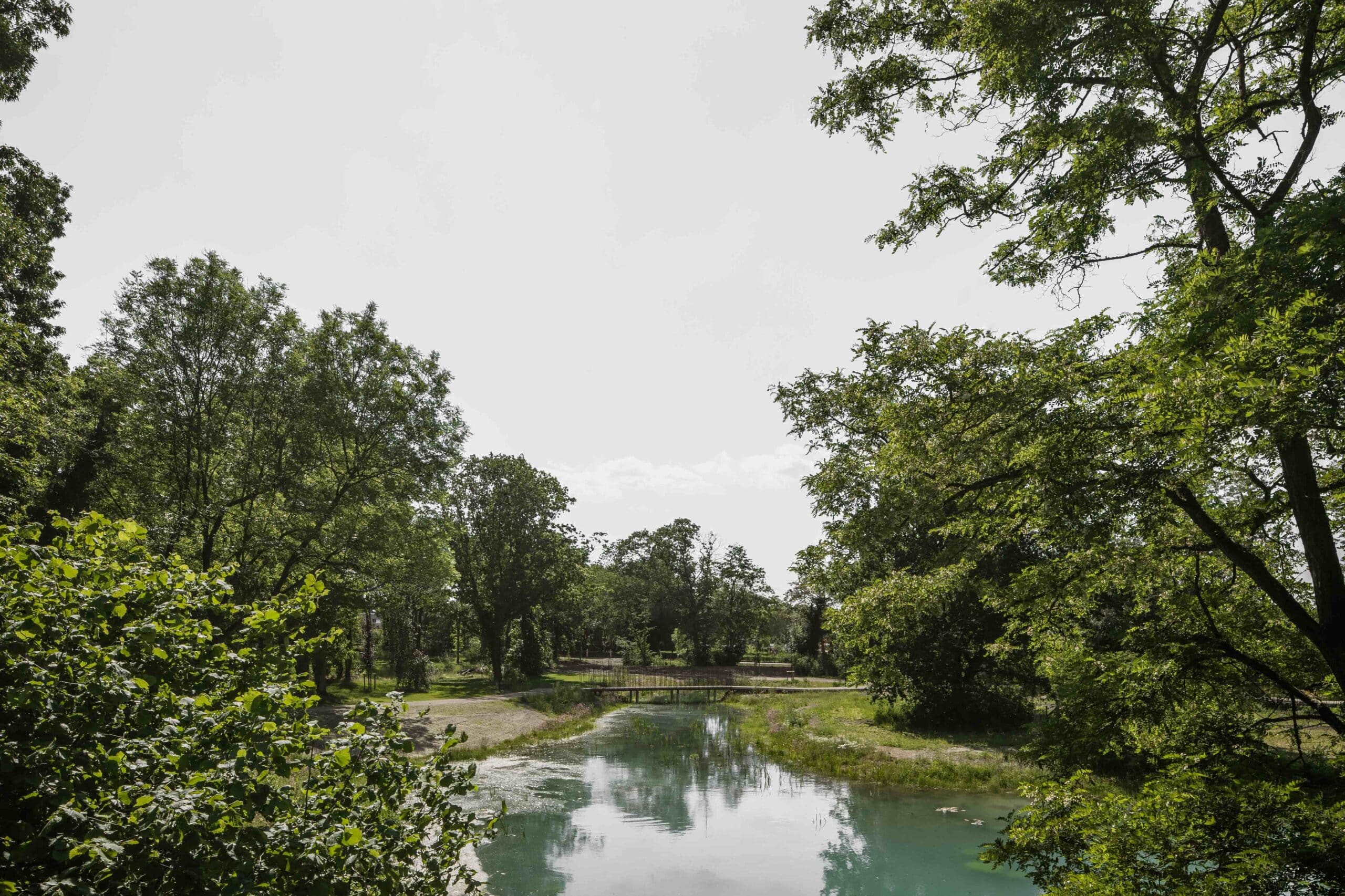 Cosmopolitan Culture Park, view on one of the ponds
Cosmopolitan Culture Park, view on one of the ponds© Koen Vanmechelen, 2019, photo by Jeroen Verrecht
LABIOMISTA is an evolving work of art, a “pregnant” site. Not only can you feel that charge, but it is also visible. A life-size, mythical looking work of art called the Guardian was placed on top of The Ark and acts as a guardian of the entrance. Half man and half God, carrying an egg – an almost canonized metaphor by Koen Vanmechelen for a world waiting for further development – he is the guardian of the fragility, of the delicate, desire for pregnancy.
The Ark
Whoever walks under The Ark, ends up in the so to speak “womb,” and becomes part of that development themself. The first artwork that is presented to visitors is SOTWA, the project in which African cattle stock is made stronger by injecting them with fresh blood.
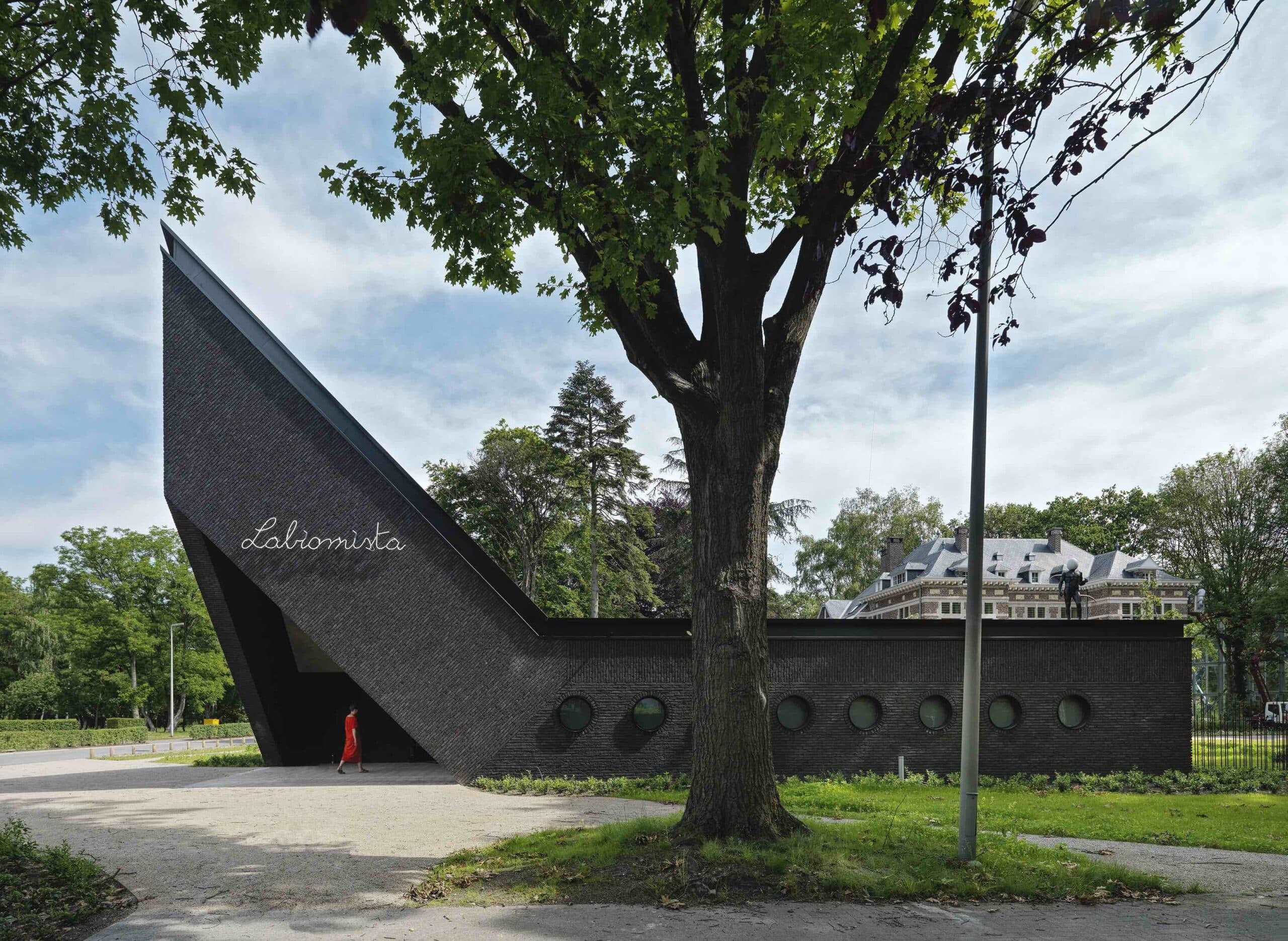 The Ark, exterior view, entrance building of LABIOMISTA, designed by Mario Botta
The Ark, exterior view, entrance building of LABIOMISTA, designed by Mario Botta© Koen Vanmechelen, 2019, photo by Enrico Cano
Villa OpUnDi
The Villa, which at the time served as the residence of the former director of the mine site and the Zwartberg Zoo, is the headquarters of OpUnDi. The Open University of Diversity gathers all the foundations and projects founded by Koen Vanmechelen, of which MOUTH, PCC, Incubated Worlds, MECC, Cosmogolem, LUCY, CC®P, The Walking Egg, and CWRM are the most important. Today, it also accommodates an almost rampant combination of acquired works of art of nearby and exotic manufacture and artistic work with the Vanmechelen signature.
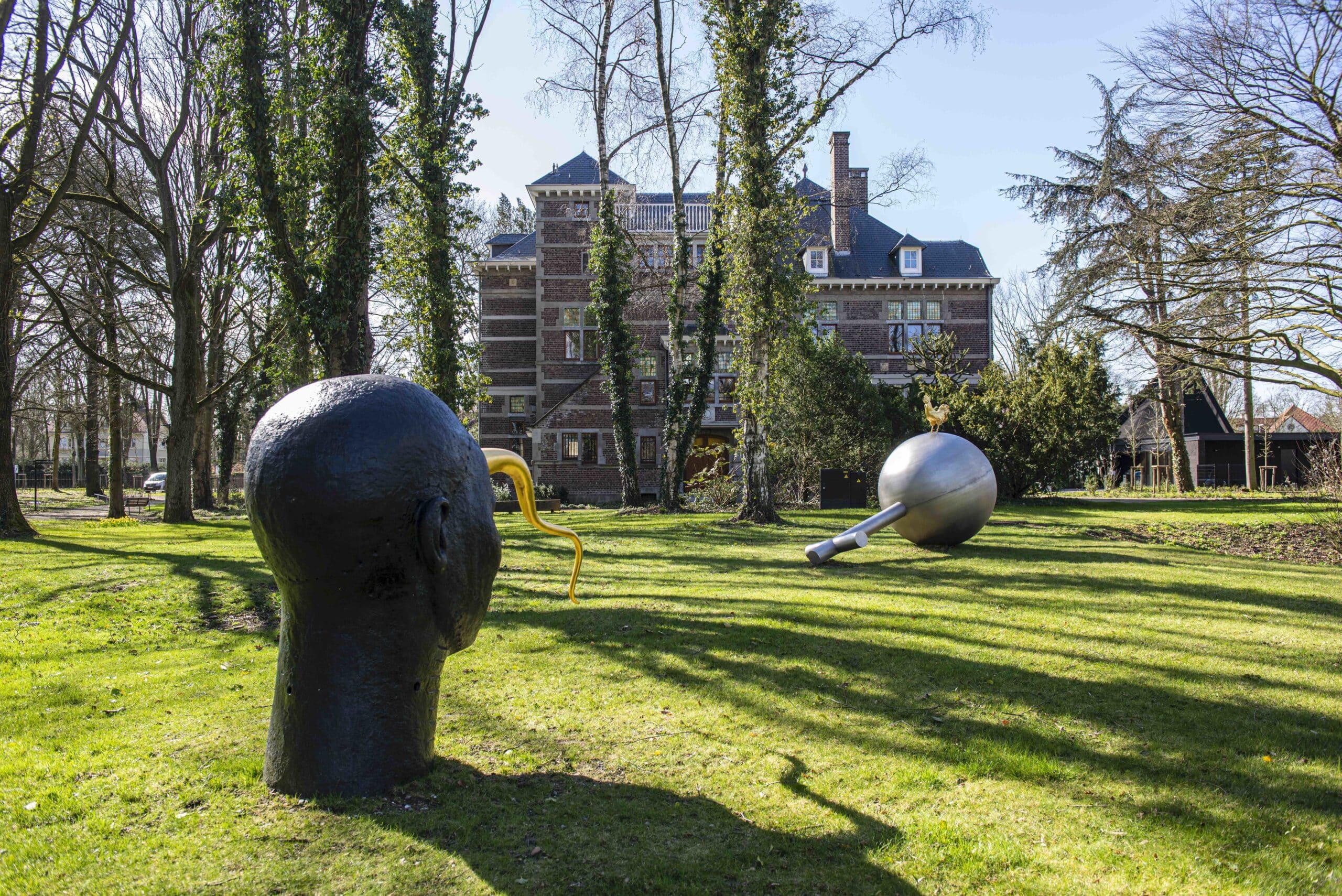 Integration, installation view, bronze and steel sculpture behind Villa OpUnDi
Integration, installation view, bronze and steel sculpture behind Villa OpUnDi© Koen Vanmechelen, 2020, photo by Paul Reinquin
The Battery
The battery, number three on the line of our “golden section,” is a large, elongated rectangle, bordered on both sides by a gigantic cage, with at the front fruit-eating birds and at the back the carnivores. Between the two is mankind. Again, there is that tension between power and might, between eating and being eaten, between nature and culture. Koen Vanmechelen stated:
“Opening the cages is the end of the ‘good’ birds. But mankind is also careful. The arrival of corona has shockingly forced us to face the facts. We may imagine ourselves to be masters of creation, but apparently little is needed to transform ourselves from predator to prey and cause the world to grind to a halt. A molecule, no bigger than a pinprick, suffices.”
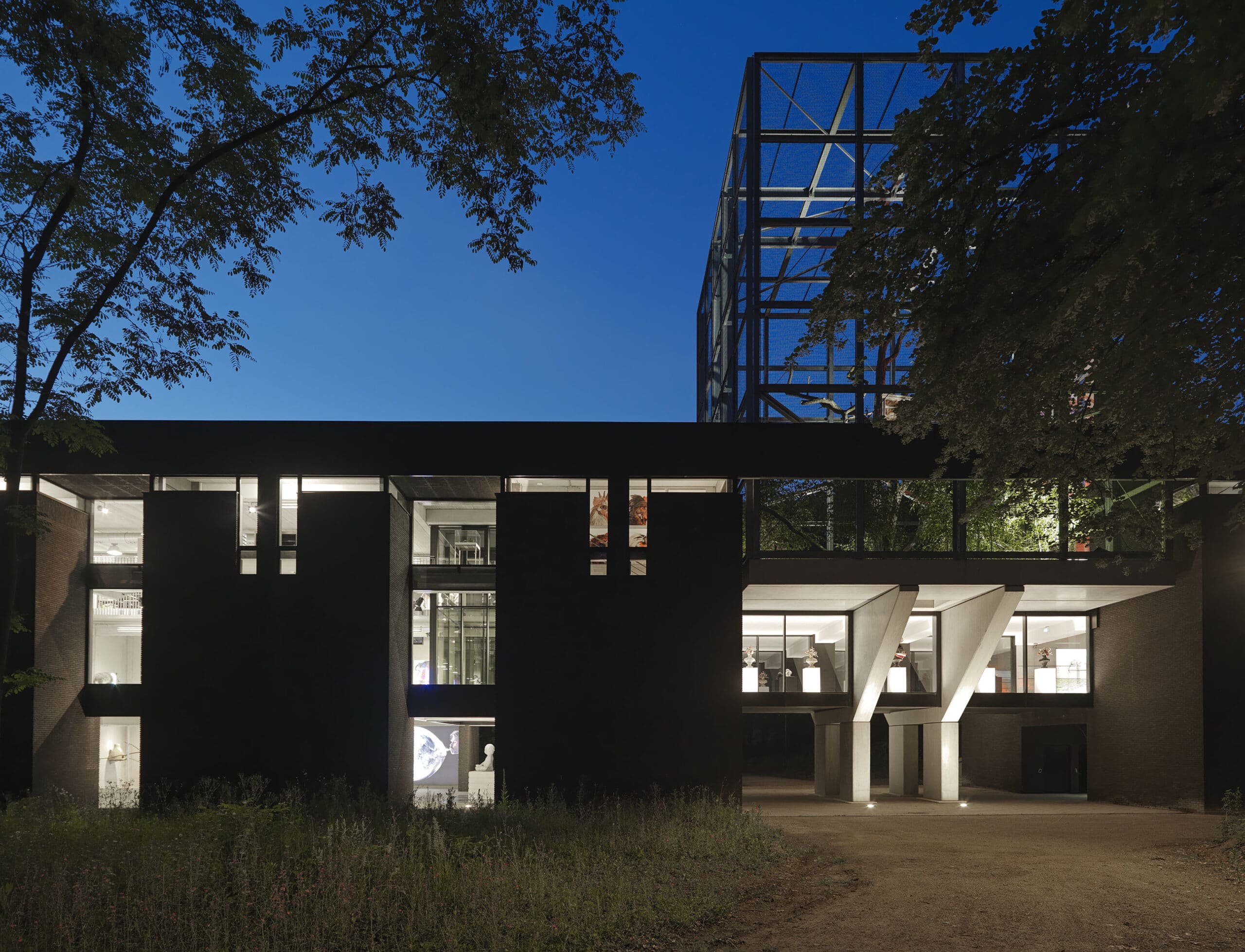 The Battery – Studio Koen Vanmechelen, exterior view, designed by Mario Botta
The Battery – Studio Koen Vanmechelen, exterior view, designed by Mario Botta© Koen Vanmechelen, 2019, photo by Enrico Cano
We walk underneath The Battery; the artist’s studio is not open to the public. Three large installations on the left seem to communicate with as many installations on the right. The sword and the egg as a symbol for mankind and the world; a pair of primal fowls (the Jungle Fowls) with free entry and exit in a cage with the neon-lit message: “Breaking the cage is setting energy free for future generations;” a giant snake guarding sacks full of eggs, but as soon as they break open, it will be the first to nibble at the chicks.
And just when you want to answer the call of paradise and take the path through the Park, you collide head-on with Collective Memory, a Greek marble statue of a child who, sitting on the Encyclopedia of Human Rights, stares firmly into the distance.
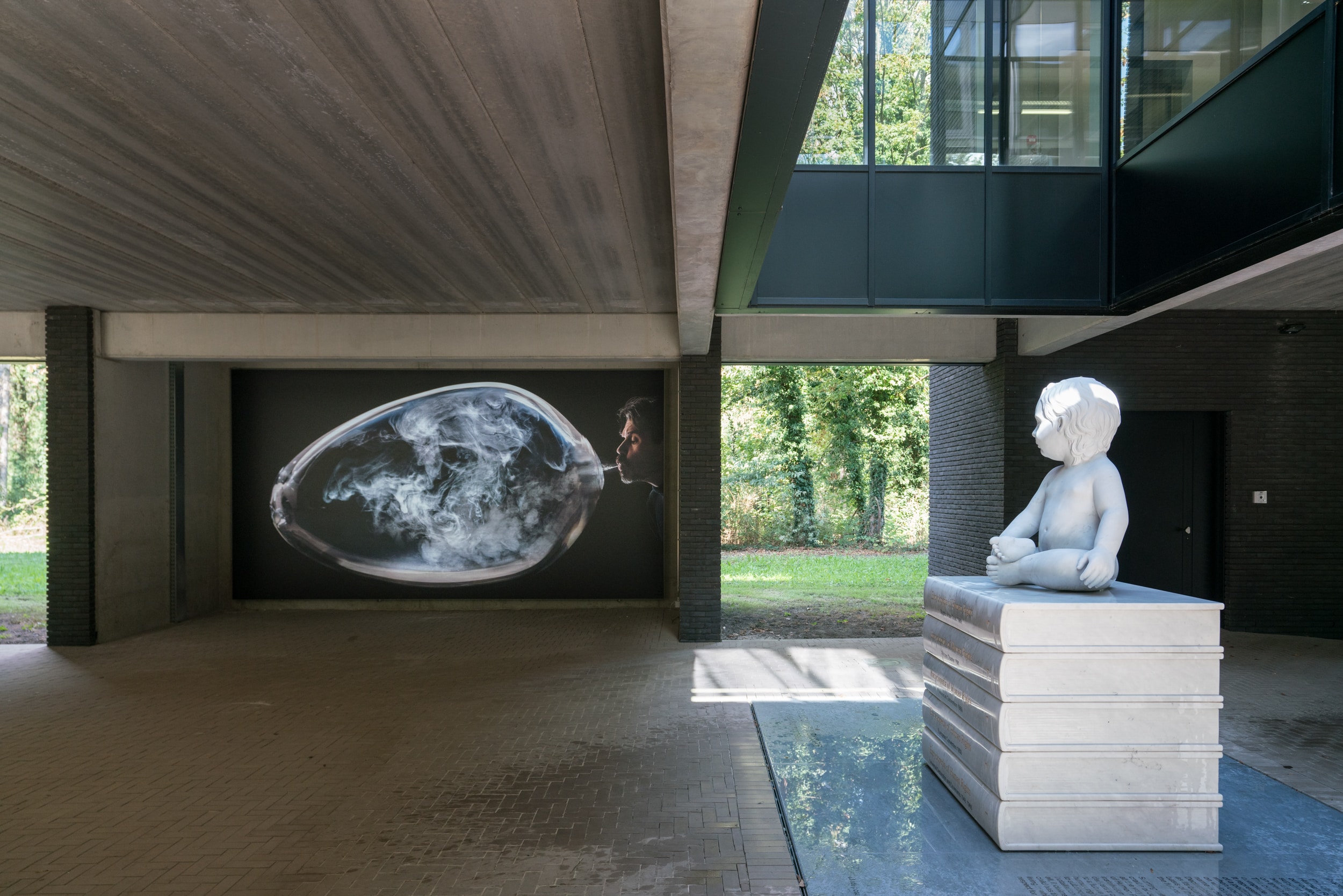 Artworks, installation view beneath The Battery – Studio Koen Vanmechelen
Artworks, installation view beneath The Battery – Studio Koen Vanmechelen© Koen Vanmechelen, 2018, photo by Kris Vervaeke
Cosmopolitan Culture Park and Protected Paradise
The Cosmopolitan Culture Park leads you along a path like a writhing serpent along with three thematically divided, naturally constructed animal compartments. The central evolutionary story of diversity that leads to growth and (genetic) mingling that makes us stronger, resonates in your mind.
Just when you start the loop back, escape is possible. Protected Paradise shines with imaginary gates and lures you into the pristine world.
This part of the site also has a guard. Protecting the Other was placed at the end of the path during the quarantine. Half woman and half muse, she symbolizes the transition from the domesticated world to nature.
We return from the pristine and return to the path in the Cosmopolitan Culture Park.
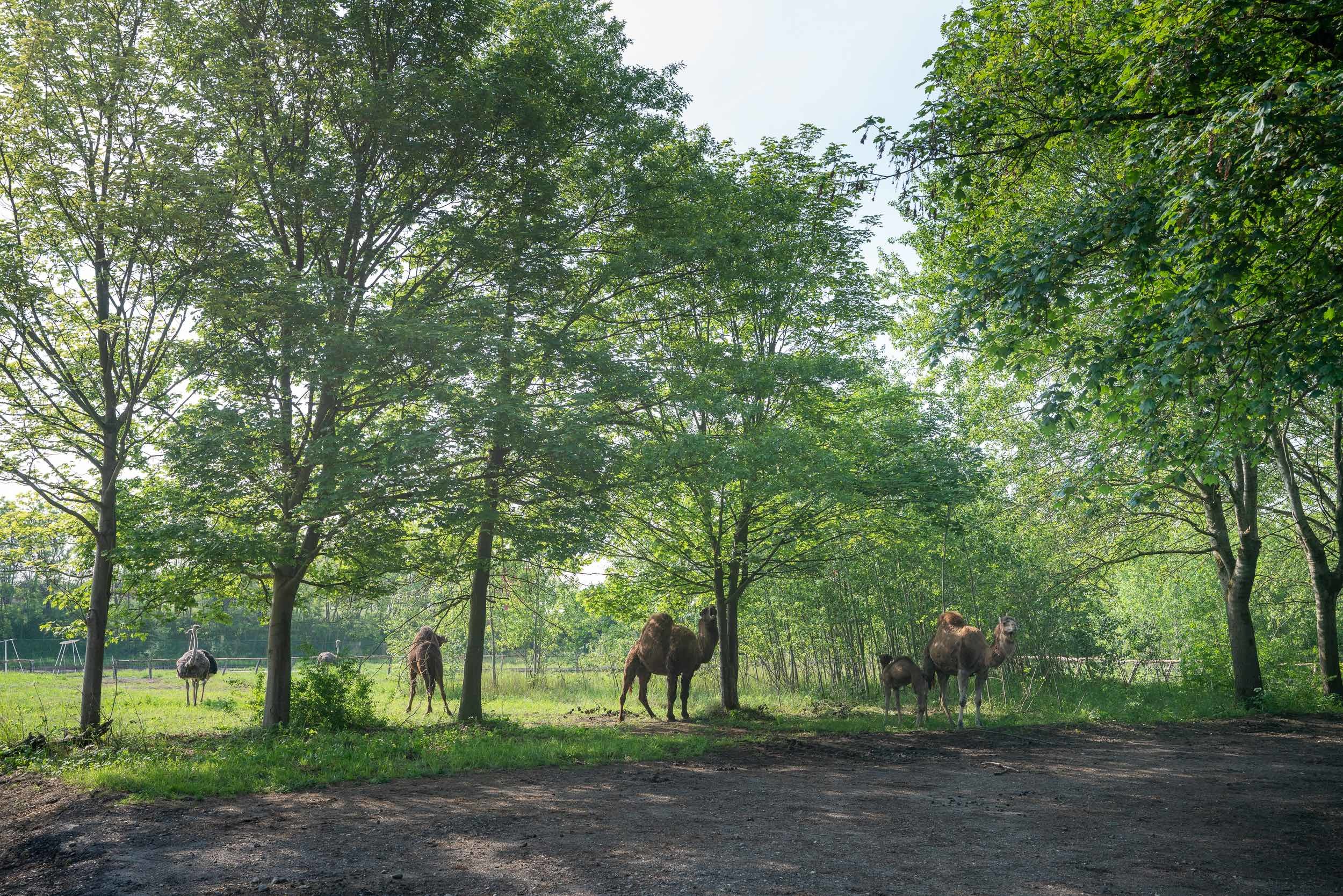 Dromedaries in the Cosmopolitan Culture Park
Dromedaries in the Cosmopolitan Culture Park© Koen Vanmechelen, 2019, photo by Kris Vervaeke
The ostriches, nandus, llamas, alpacas, dromedaries all occupy a leading position in the story with which Koen Vanmechelen interweaves art, culture, nature, and science in search of answers to the great questions of our civilisation.
You can feel that we have not always done so well, at the sight of the recently installed black marble Collective Memory-sculpture next to the road. The child is now wearing a blindfold. Koen Vanmechelen stated: “Doesn’t it want to see the world? Or do we want to spare it the sight of the world that we leave behind for him?”
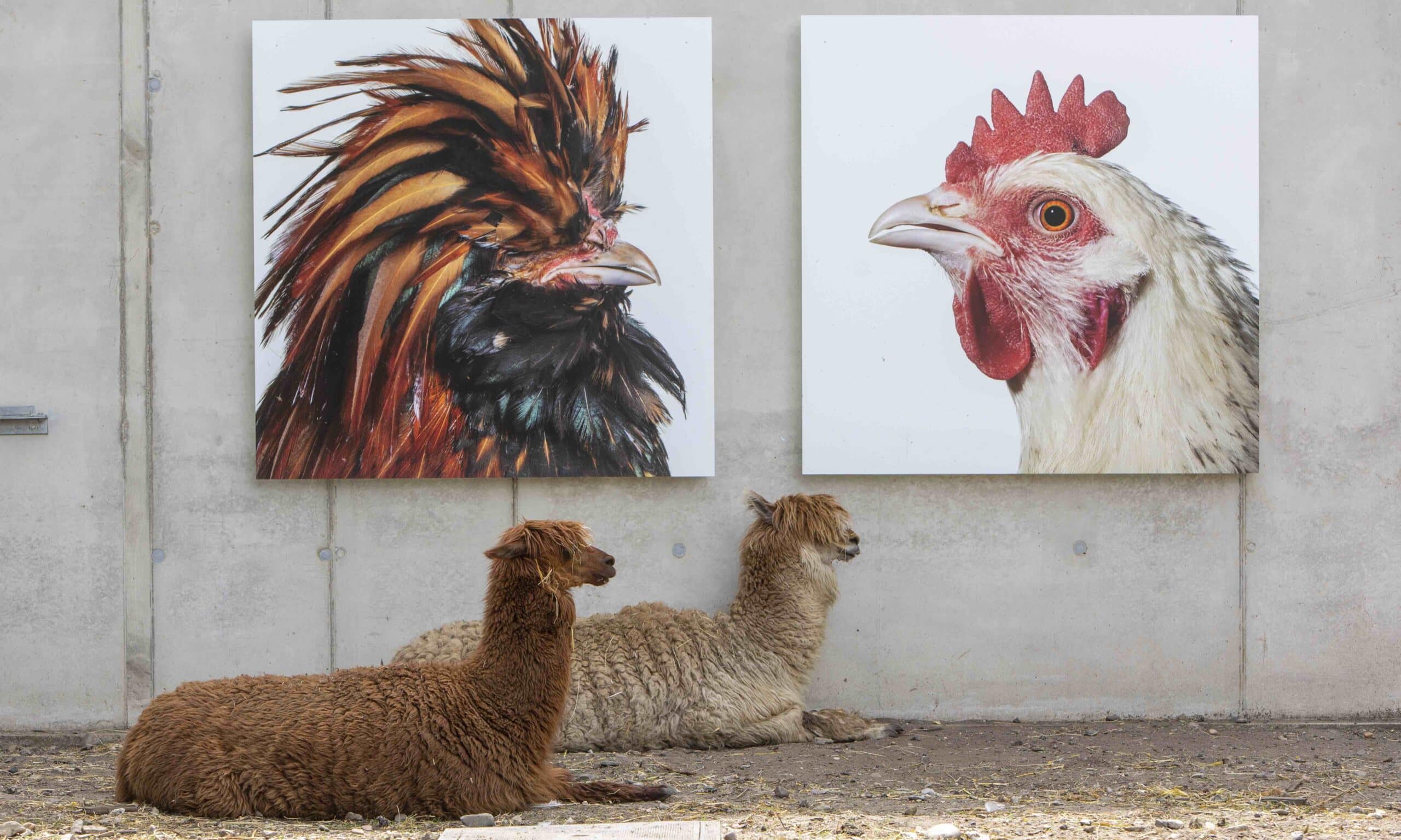 Alpacas in the Cosmopolitan Culture Park
Alpacas in the Cosmopolitan Culture Park© Koen Vanmechelen, 2019, photo city of Genk by Tony van Galen
A little further on, a llama called Winter, the Ground Zero of medication that is currently being developed against COVID, runs among her peers, who, like her, were once used in research. SARS, MERS, HIV, . . . The camelids play a crucial role in the struggle of humans to protect themselves against all these viruses. We rewind back to the year 2000. Koen Vanmechelen gives his wife Inge two llamas for her birthday. A poisoning by eating rhododendrons brings one of the animals to the brink of death, but Inge watches over her. For twelve hours. The llama survives. Bewilderment everywhere. These are the early days of the discovery of the double immune system.
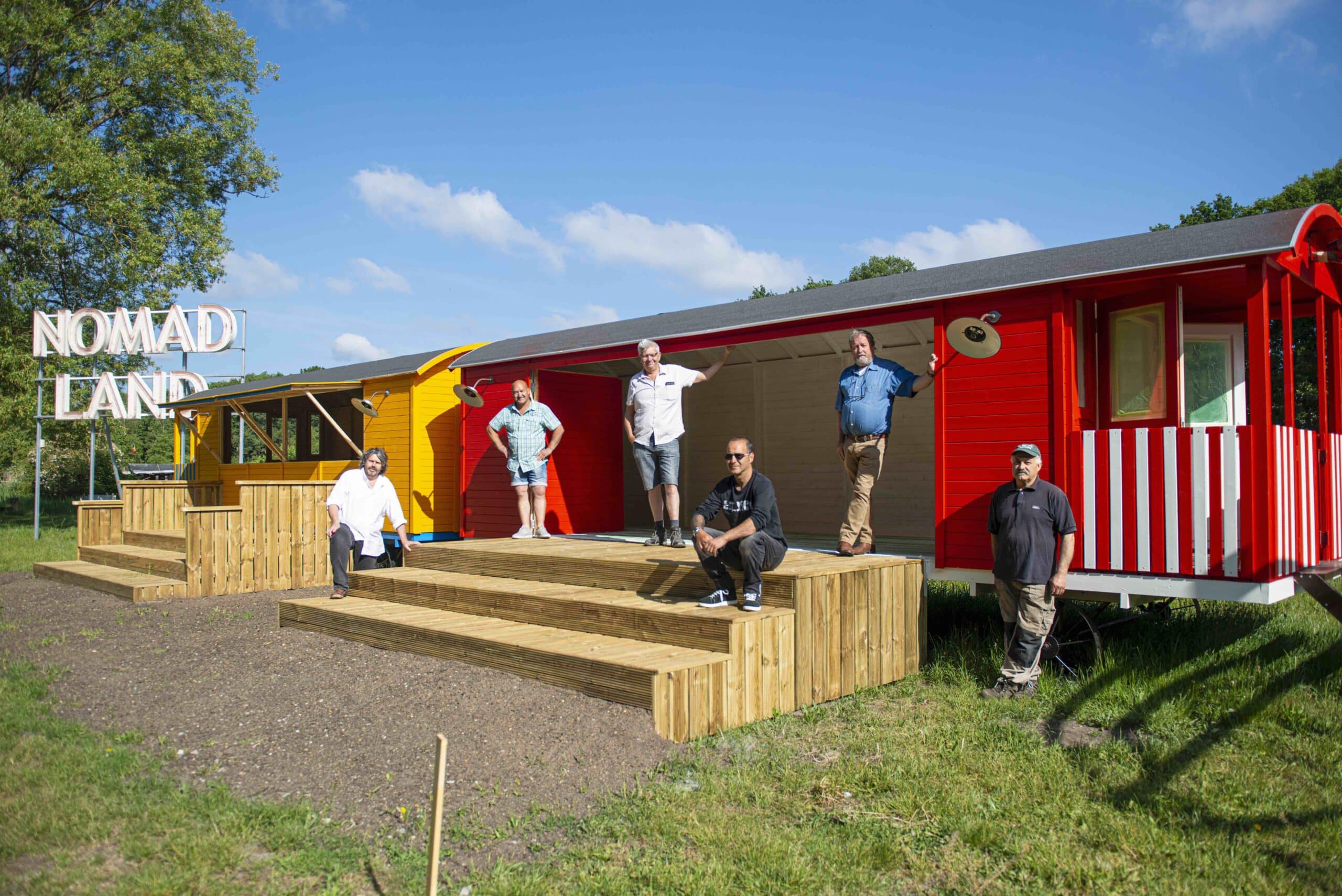 Artist Koen Vanmechelen and volunteers from the local community with the gipsy wagons at Nomadland
Artist Koen Vanmechelen and volunteers from the local community with the gipsy wagons at Nomadland© Koen Vanmechelen, 2019, photo by Paul Reinquin
Nomad land
“The global only exists by the generosity of the local,” is one of Koen Vanmechelens’ recurring statements. Today, visitors from far and wide come to visit LABIOMISTA. Proceeds from all sales go to the public operation of the park and to the development of the Genk communities, adjacent to LABIOMISTA. No less than 130 nationalities work on a patchwork of allotments there. The ingredients are processed into foods and drinks that are offered to visitors during cosy nomadic evenings, on terraces in the grass, from cheerful gipsy wagons, lit with neon and colourful lights.
Koen Vanmechelen 2000-2020: Evolving artist
Anyone who associates Koen Vanmechelen with his Cosmopolitan Chicken Project was involved from the very beginning.
That the project was not a one-day event, is abundantly clear from the fact that no less than 25 international breeds of chicken joined the project today, which tells a story about the power of diversity, dangers of inbreeding and monoculture, the enrichment by new blood.
Anyone who has followed Koen Vanmechelen’s journey around the world over the past twenty years knows that all that has been brought together in LABIOMISTA, are chapters that are part of a logical story.
Everything in LABIOMISTA is the result of a consistently moving trajectory. LABIOMISTA is, if you will, an extension of an exhibition form that Koen Vanmechelen did twenty years ago when he crossed the first breeds of chicken and marvelled at the strength of the llama he had given to his wife.
And it’s not finished. Not in his park. Not in his head, which houses a brain that never finds peace. It’s not over with his attempts to use metaphors to hold up a mirror to mankind. Not with his cooperation with science, in search of breakthroughs that find the first step in artistic intuition. Not with his adventuring around the world in response to the call of the rooster, and to the miraculous constitution of the camelids, looking for ways to give larger parts of the world population a just and dignified life. Not with the further development of LABIOMISTA, with novelties that may charm an audience, but, above all, should evoke them.

